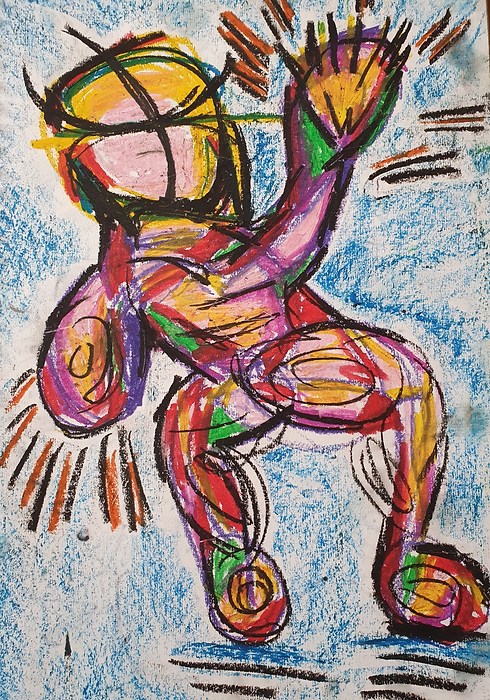Rebecca Holland

Art Psychotherapy
Art therapy is a form of psychotherapy that uses art media as its primary mode of expression and communication. You will be provided a range of art materials to explore and this process is non-directive.
It is not an art activity or art lesson, although the sessions can be enjoyable. Clients do not need any previous experience or expertise in art. It is a way to explore feelings, thoughts, and behaviours in a safe, reflective, confidential, and non-judgmental environment. It can also bring positivity and new perspectives through creativity.
On the British Association of Art Therapist’s YouTube channel you can hear people’s experiences with Art
therapy and more videos about Art therapy:
https://www.youtube.com/channel/UCXOatMnzGOtHg9TJkUZaMHQ/featured
EMDR Therapy
(Eye Movement Desensitisation and Reprocessing)
EMDR asks you to focus briefly on the trauma memory while simultaneously experiencing bilateral stimulation (typically eye movements), which reduces the vividness and emotion associated with the trauma memories. EMDR can help with the symptoms of trauma and PTSD. It can also help support with bereavement including sudden losses, traumatic bereavement, pregnancy loss, and pet loss. EMDR therapy can also be a helpful treatment for disorders such as anxiety, depression, OCD, chronic pain, addictions, and other distressing life experiences.
Please see the video on YouTube to find out more:

Other Therapy Techniques
Within my Art Psychotherapy practice we may incorporate CATT and/or DBT approaches to assist your therapy journey. Please see below for more information:
Child Accelerated Trauma Treatment (CATT)
CATT can be used in therapy for children, young people, and adults. It is a trauma-informed technique to reduce Post-Traumatic Stress symptoms. There are two techniques used, Memory processing and Rescripting.
Memory processing is used to move the trauma memory from the Amygdala to the Hippocampus, therefore, storing it within long-term memory rather than being stuck within the present moment and triggering a stress response (Fight, flight, freeze, and Flop).
The Rescripting session will guide you to create a new interpretation that provides you agency, control, and empowerment.
This technique may be something you would like to involve in your therapy and this can be discussed in more detail. Before using this technique it is also important we explore your trauma symptoms, understand the symptoms, and build stabilisation tools.
Dialectic behavioural therapy (DBT)
Dialectical Behaviour Therapy (DBT) is a modified type of Cognitive Behavioural Therapy (CBT). Dialectical’ means trying to understand how two things that seem opposite can both be true. For example, accepting yourself but also a willingness to change your own behaviours.
DBT skills are taught to help an individual regulate emotions, control self-destructive behaviours, and improve interpersonal relationships. The four main skills taught are:
-
Mindfulness: the practice of being fully aware and present in this one moment
-
Distress Tolerance: how to tolerate pain in difficult situations, not change it
-
Interpersonal Effectiveness: how to ask for what you want and say no while maintaining self-respect and relationships with others
-
Emotion Regulation: how to manage emotions.
